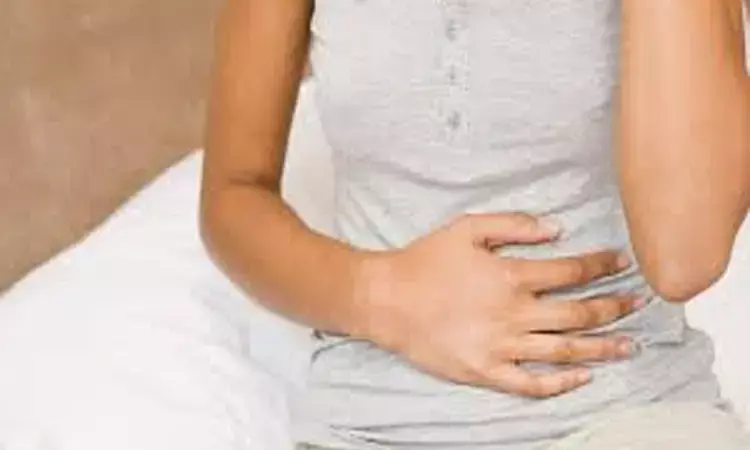- Home
- Medical news & Guidelines
- Anesthesiology
- Cardiology and CTVS
- Critical Care
- Dentistry
- Dermatology
- Diabetes and Endocrinology
- ENT
- Gastroenterology
- Medicine
- Nephrology
- Neurology
- Obstretics-Gynaecology
- Oncology
- Ophthalmology
- Orthopaedics
- Pediatrics-Neonatology
- Psychiatry
- Pulmonology
- Radiology
- Surgery
- Urology
- Laboratory Medicine
- Diet
- Nursing
- Paramedical
- Physiotherapy
- Health news
- Fact Check
- Bone Health Fact Check
- Brain Health Fact Check
- Cancer Related Fact Check
- Child Care Fact Check
- Dental and oral health fact check
- Diabetes and metabolic health fact check
- Diet and Nutrition Fact Check
- Eye and ENT Care Fact Check
- Fitness fact check
- Gut health fact check
- Heart health fact check
- Kidney health fact check
- Medical education fact check
- Men's health fact check
- Respiratory fact check
- Skin and hair care fact check
- Vaccine and Immunization fact check
- Women's health fact check
- AYUSH
- State News
- Andaman and Nicobar Islands
- Andhra Pradesh
- Arunachal Pradesh
- Assam
- Bihar
- Chandigarh
- Chattisgarh
- Dadra and Nagar Haveli
- Daman and Diu
- Delhi
- Goa
- Gujarat
- Haryana
- Himachal Pradesh
- Jammu & Kashmir
- Jharkhand
- Karnataka
- Kerala
- Ladakh
- Lakshadweep
- Madhya Pradesh
- Maharashtra
- Manipur
- Meghalaya
- Mizoram
- Nagaland
- Odisha
- Puducherry
- Punjab
- Rajasthan
- Sikkim
- Tamil Nadu
- Telangana
- Tripura
- Uttar Pradesh
- Uttrakhand
- West Bengal
- Medical Education
- Industry
MRI useful for identifying sacroiliitis in patients with Crohn disease: Study

USA: MRI is a useful tool for the identification of subclinical sacroiliitis in patients with Crohn disease, suggests a recent study in the International Journal of Rheumatic Diseases. According to the study, about 12%‐18% of CD patients had MRI evidence of sacroiliitis that was not associated with serologic measures, CD activity or back pain.
Prevalence of sacroiliitis in CD is variable and depends on the defining criteria. The study by Fardina Malik, NYU School of Medicine, New York, NY, USA, and colleagues aimed to identify sacroiliitis in CD patients and its associaiton with clinical and serological markers by using standardized sacroiliac joint (SIJ) magnetic resonance imaging (MRI).
The researchers enrolled patients with CD (n=33) from an inflammatory bowel disease clinic who underwent SIJ MRI. Data on history of joint/back pain, CD duration, Bath Ankylosing Spondylitis Metrology Index (BASMI), human leukocyte antigen‐B27 status, Harvey Bradshaw Index (HBI) for activity of CD, Bath Ankylosing Spondylitis Disease Activity Index, Ankylosing Spondylitis Disease Activity Score, and various serologic markers of inflammation were collected.
Three blinded readers reviewed MRIs for active and structural lesions according to the Spondyloarthritis Research Consortium of Canada modules.
Key findings of the study include:
- Nineteen subjects (58%) reported any back pain, 13 of whom had inflammatory back pain.
- Four subjects (12%) showed sacroiliitis using global approach and 6 (18%) met Assessment of SpondyloArthritis international Society MRI criteria of sacroiliitis.
- Older age (mean 51.2 ± SD 12.5 vs. 37.2 ± 14), history of dactylitis (50.0% vs. 3.4%,) and worse BASMI (4.1 ± 0.7 vs. 2.4 ± 0.8) were associated with MRI sacroiliitis; no serologic measure was associated.
"There were 12%‐18% of CD patients who had MRI evidence of sacroiliitis, which was not associated with back pain, CD activity or serologic measures. This data suggests that MRI is a useful modality to identify subclinical sacroiliitis in CD patients," wrote the authors.
The study titled, "Utility of magnetic resonance imaging in Crohn's associated sacroiliitis: A cross‐sectional study," is published in the International Journal of Rheumatic Diseases.
DOI: https://onlinelibrary.wiley.com/doi/abs/10.1111/1756-185X.14081
Dr Kamal Kant Kohli-MBBS, DTCD- a chest specialist with more than 30 years of practice and a flair for writing clinical articles, Dr Kamal Kant Kohli joined Medical Dialogues as a Chief Editor of Medical News. Besides writing articles, as an editor, he proofreads and verifies all the medical content published on Medical Dialogues including those coming from journals, studies,medical conferences,guidelines etc. Email: drkohli@medicaldialogues.in. Contact no. 011-43720751


